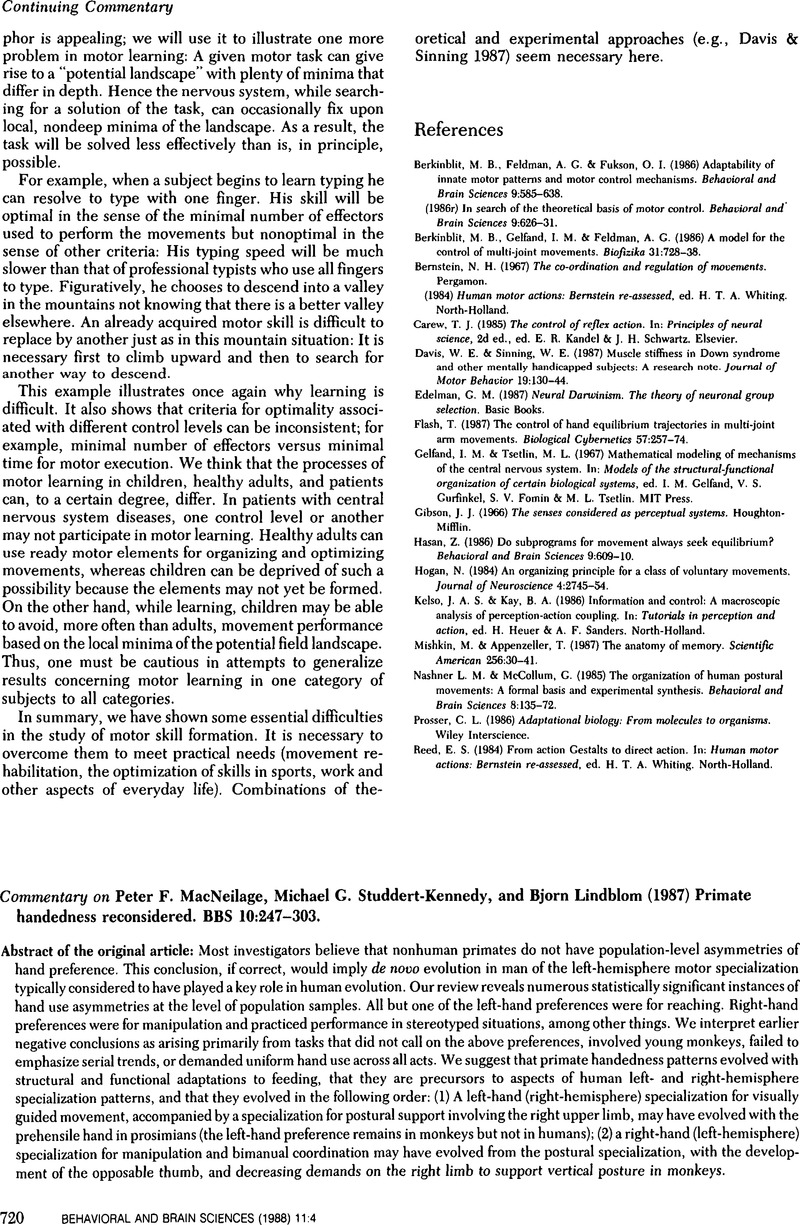Crossref Citations
This article has been cited by the following publications. This list is generated based on data provided by Crossref.
Annett, Marian
and
Annett, John
1991.
Handedness for Eating in Gorillas.
Cortex,
Vol. 27,
Issue. 2,
p.
269.
King, James E.
and
Landau, Virginia I.
1993.
Primate Laterality.
p.
107.
Hopkins, William D.
and
Bard, Kim A.
1993.
Primate Laterality.
p.
251.
MacNeilage, Peter F.
1993.
Primate Laterality.
p.
319.
Colell, Montserrat
Segarra, M. Dolores
and
Pi, Jordi Sabater
1995.
Hand preferences in chimpanzees (Pan troglodytes), bonobos (Pan paniscus), and orangutans (Pongo pygmaeus) in food-reaching and other daily activities.
International Journal of Primatology,
Vol. 16,
Issue. 3,
p.
413.
Prieur, Jacques
Le Du, Gwendoline
Stomp, Mathilde
Barbu, Stéphanie
and
Blois-Heulin, Catherine
2020.
Human laterality for manipulation and gestural communication: A study of beach-volleyball players during the Olympic Games.
Laterality,
Vol. 25,
Issue. 2,
p.
229.


